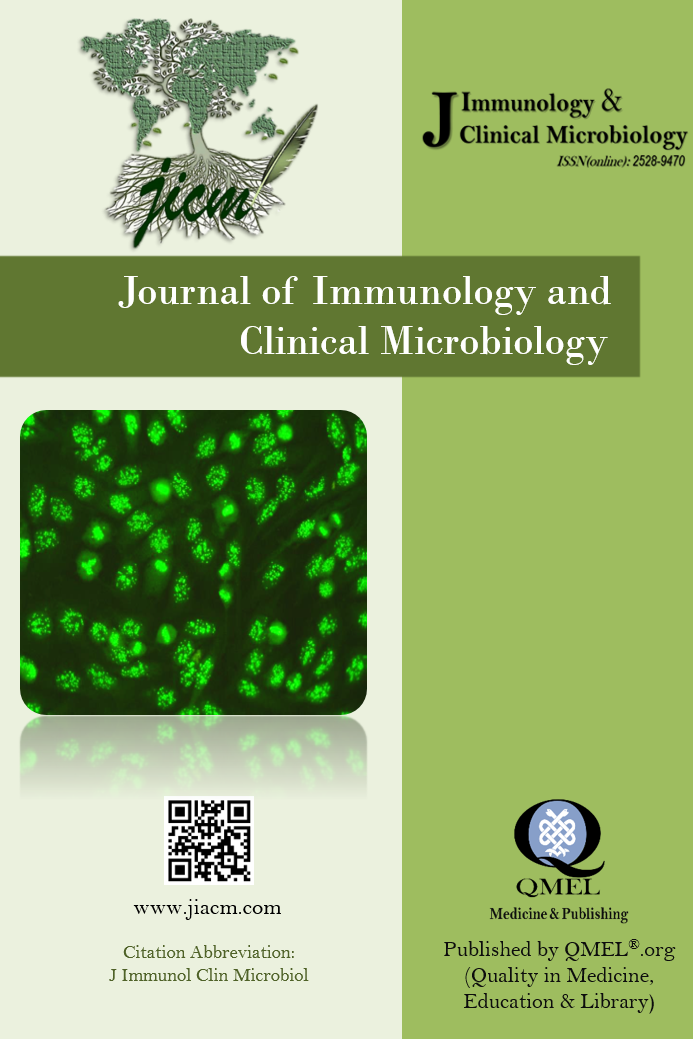The impact of anesthesia choice on maternal and fetal outcomes in pregnant women with COVID-19 undergoing cesarean section
The impact of anesthesia choice on maternal and fetal outcomes in pregnant women with COVID-19 undergoing cesarean section
COVID-19, pregnancy, cesarean general anesthesia, regional anesthesia,
___
- 1. Velavan TP, Meyer CG: The COVID‐19 epidemic. Tropical medicine & international health 2020, 25(3):278.
- 2. Dashraath P, Wong JLJ, Lim MXK, Lim LM, Li S, Biswas A, Choolani M, Mattar C, Su LL: Coronavirus disease 2019 (COVID-19) pandemic and pregnancy. American journal of obstetrics and gynecology 2020, 222(6):521-531.
- 3. Rasmussen SA, Jamieson DJ: Coronavirus disease 2019 (COVID-19) and pregnancy: responding to a rapidly evolving situation. Obstetrics and gynecology 2020.
- 4. Silasi M, Cardenas I, Kwon JY, Racicot K, Aldo P, Mor G: Viral infections during pregnancy. American journal of reproductive immunology 2015, 73(3):199-213.
- 5. Mor G, Cardenas I: The immune system in pregnancy: a unique complexity. American journal of reproductive immunology 2010, 63(6):425-433.
- 6. Luppi P: How immune mechanisms are affected by pregnancy. Vaccine 2003, 21(24):3352-3357.
- 7. James AH: Pregnancy-associated thrombosis. ASH Education Program Book 2009, 2009(1):277-285.
- 8. Ortiz EI, Herrera E, De La Torre A: Coronavirus (COVID 19) Infection in Pregnancy. Colombia Médica 2020, 51(2).
- 9. Liu D, Li L, Wu X, Zheng D, Wang J, Yang L, Zheng C: Pregnancy and perinatal outcomes of women with coronavirus disease (COVID-19) pneumonia: a preliminary analysis. American journal of roentgenology 2020, 215(1):127-132.
- 10. Páez L JJ, Navarro V JR: Regional versus general anesthesia for cesarean section delivery. Colombian Journal of Anestesiology 2012, 40(3):203-206.
- 11. Hawkins JL, Chang J, Palmer SK, Gibbs CP, Callaghan WM: Anesthesia-related maternal mortality in the United States: 1979–2002. Obstetrics & Gynecology 2011, 117(1):69-74.
- 12. Wahba R: Perioperative functional residual capacity. Canadian Journal of Anaesthesia 1991, 38(3):384-400.
- 13. Hedenstierna G, Rothen HU: Respiratory function during anesthesia: effects on gas exchange. Comprehensive Physiology 2011, 2(1):69-96.
- 14. Strandberg Å, Tokics L, Brismar B, Lundquist H, Hedenstierna G: Atelectasis during anaesthesia and in the postoperative period. Acta Anaesthesiologica Scandinavica 1986, 30(2):154-158.
- 15. Don H: The mechanical properties of the respiratory system during anesthesia. International anesthesiology clinics 1977, 15(2):113-136.
- 16. Hedenstierna G, Edmark L: Mechanisms of atelectasis in the perioperative period. Best Practice & Research Clinical Anaesthesiology 2010, 24(2):157-169.
- 17. Lindberg P, Gunnarsson L, Tokics L, Secher E, Lundquist H, Brismar B, Hedenstierna G: Atelectasis and lung function in the postoperative period. Acta Anaesthesiologica Scandinavica 1992, 36(6):546-553.
- Yayın Aralığı: Yılda 4 Sayı
- Başlangıç: 2016
- Yayıncı: Erkan YULA
Ethiological, Clinical and Epidemiological Overview of Covid-19 Pandemia
COVİD-19 İLE İLİŞKİLİ KANDİDEMİ
Fatma Meral İNCE, Özge ALKAN BİLİK, Hasan İNCE
Romatoit Artrit Öntanılı Hasta Serumlarında Anti CCP ve RF ‘ün Değerlendirilmesi
Selçuk KAYA, Mehmet KARABEY, Ayşegül AKSOY GÖKMEN, Gökhan KABADAYI
Changes in Antibiotic Susceptibility of Urinary Tract Pathogens in Pediatric Population by Years
Two Elderly Patients with Disseminated Tuberculosis
Cervical Lymphadenitis Mimicking Lymphoma: A Case of Tuberculosis
